Last-Minute NYC Holiday Gift Guide 🎁
We’ve created a holiday gift guide with presents for the intrepid New Yorker that should arrive just in time—


As fans poured off the LIRR and the MTA’s 7 line for yesterday’s All-Star Game at Citi Field, few paused to speak to the protesters picketing with signs on 126th Street. Yet the protest is at the very heart of a resurgent New York, a city that is leaving behind its industrial heritage and, with it, pollution and environmental degradation—but also jobs.
Every mayoral administration since Impelliterri’s in the 1950s has tried to radically redevelop the environmentally degraded Willets Point industrial area of Corona in northern Queens. The difference is that the Bloomberg administration will probably succeed.
Known as the Iron Triangle and given literary fame by F. Scott Fitzgerald’s Gatsby, who watched the Valley of Ashes burn from his Long Island mansion, Willets Point was originally part of a great swamp that came to be used as a municipal dump in the early 20th century. As neighboring land was transformed first for the 1939 World’s Fair and later into Flushing Meadows Corona Park, Willets Point was gradually converted into the gritty home to auto body and chop shops, junk and salvage yards, construction businesses, warehouses, and towing concerns that it is now. There is also an MTA storage yard and the privately owned House of Spices, the nation’s largest distributor of Indian foods.

When Fitzgerald wrote about Corona’s fires in the 1920s, much of the area was a bleak dumping ground, geographically far from elegant homes or thriving businesses. Today Willets Point is adjacent to flourishing residential and commercial neighborhoods—and also directly across 126th street from the Mets stadium and down the road from the National Tennis Center. Tourists and sports fans find a very different experience from that in competitor cities—say, the neighborhood charm of Boston’s Fenway Park, the commercial liveliness of Baltimore’s Camden Yards, or the elegance of London’s Wimbledon. Instead, they encounter an area that has been polluted by destructive government policies and private dumping of wastes for over a century.
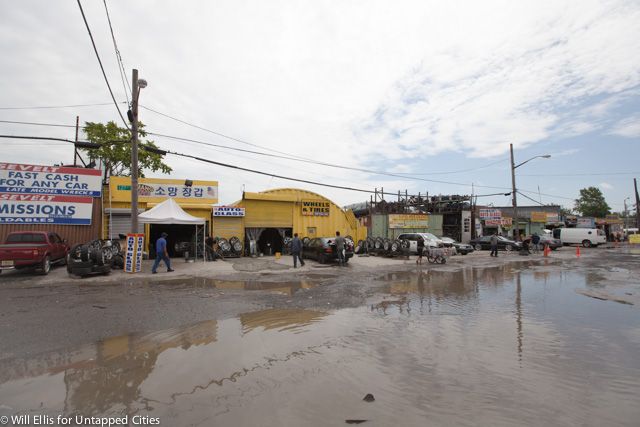
What the city’s environmental expert described as “poor housekeeping” on the part of auto body shops and other firms—leaking petroleum, pouring toxins and heavy metals onto the ground—became especially serious because of the area’s high water table, which produces a natural swamp easily contaminated by toxic run-offs. No infrastructure is in place to contain and recycle the waste, with the result that it goes straight into the bay.
Calling Willets Point’s 75-acre triangle of land “New York’s next great neighborhood” and “a historic redevelopment effort,” the administration plan promises “retail and entertainment amenities, a hotel and convention center, mixed-income housing, public open space, and community uses.” The city chose two developers—Related Companies and Sterling Equities—in 2011 to form a joint venture, the Queens Development Group. QDG will initially acquire and build on 23 acres adjacent to Citi Field, as well as developing a retail and entertainment complex west of Citi Field. The city pledges 2500 housing units (875 affordable), 7100 permanent jobs, and 12000 construction jobs.
In a sympathetic 2006 study, Dr. Tom Angotti of Hunter College called Willets Point a “unique business incubator that provides jobs and entrepreneurial opportunities to diverse new immigrant populations from surrounding neighborhoods.” The work force is mainly Spanish speaking.
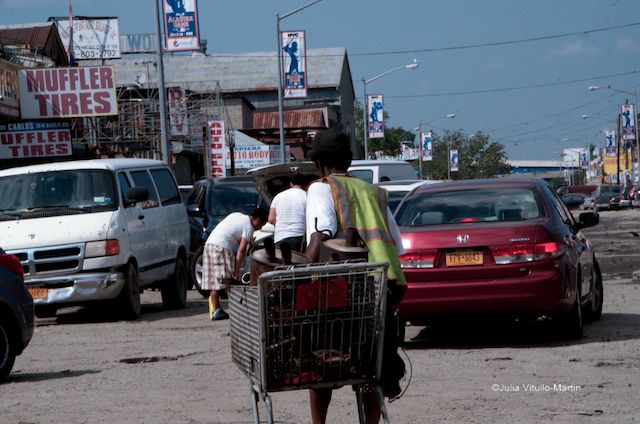
Equally important, many property owners argue that the seemingly anarchic atmosphere is due to the city’s refusal over the years to provide basic infrastructure. Most of the streets are unpaved, and those that are paved are pitted, potholed, and often flooded. Curbs and sidewalks are very few. There are no sanitary sewers, requiring all waste either to stay in place or flow into cesspools. (The city broke ground for the first sanitary sewer in December 2011.) The storm sewers are clogged or simply not functioning.
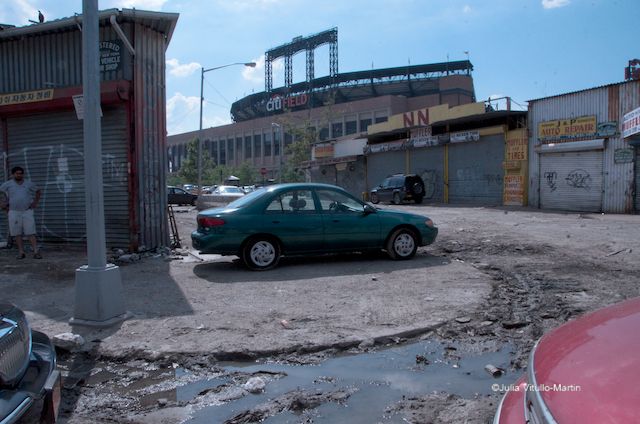
The city is continuing to push hard to develop Willets Point into a mixed-use area to complement Citi Field and the flourishing neighborhood of Flushing. The city has already acquired 95% of the initial 23 acres of land needed for the project, and intends to move forward with some evictions next week, say the protesters. In the meantime, housing advocates continue to demand affordable housing, which has been moved back on the project’s schedule. The time for development and environmental remediation has finally come to Willets Point, to the deep unhappiness of many of its businesses. Just as meat-packing was pushed out of Manhattan for waterfront development in the 20th century, so the auto and scrap industries will be replaced by 21st century uses in a resurgent Queens.
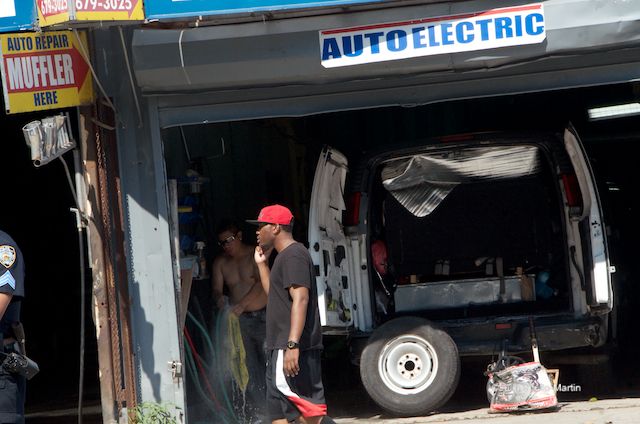
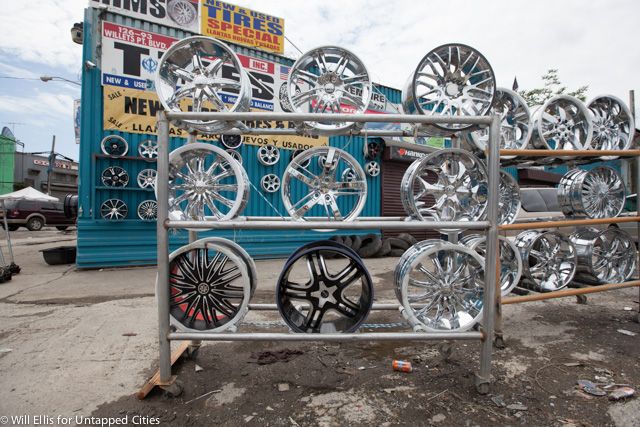
Julia Vitullo-Martin is a Senior Fellow at Regional Plan Association and director of its Center for Urban Innovation. Get in touch with her @JuliaManhattan.
Video of Willets Point by Andrew Kim, from Columbia University’s Montage City class (taught by Urban Omnibus founder, Cassim Shepard):
Subscribe to our newsletter